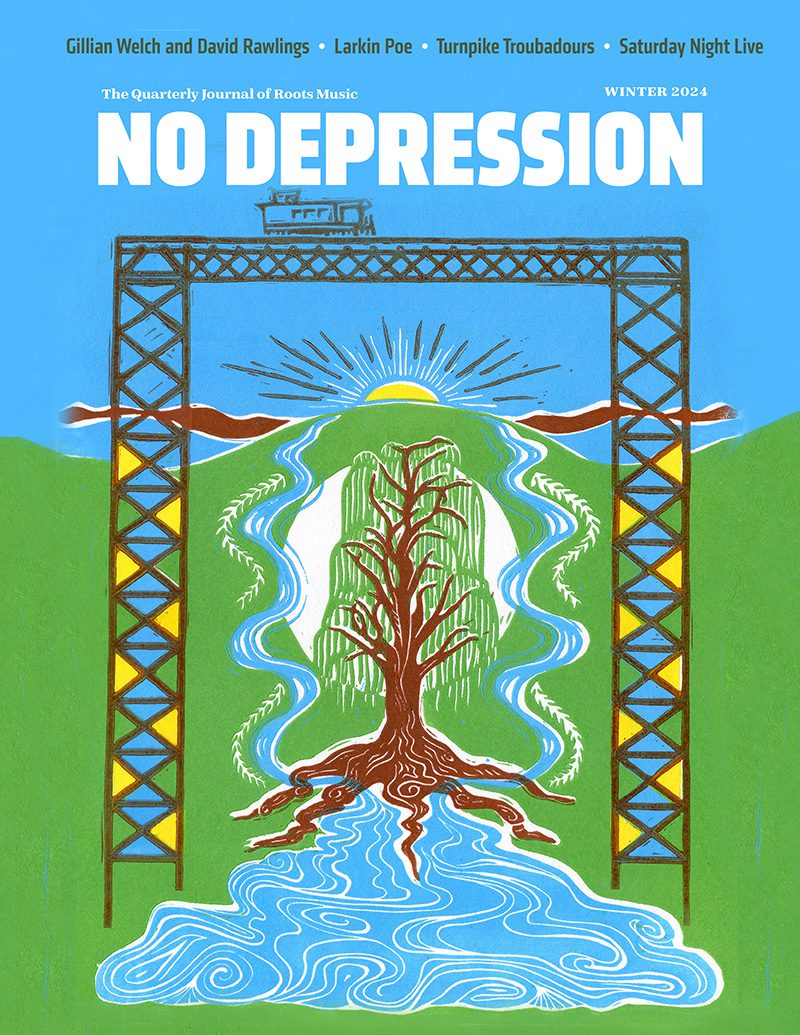“Those in power write the history, those who suffer write the songs.” – Frank Harte
All across America on March 17 people will don Leprechaun hats of cheap green plastic and drink cups of cheap green beer and otherwise carry on in foolish revelry caricaturing a culture they know little about, without any appreciation of how so many Irish came to be in America in the first place.
The long, sad song of Ireland is a mournful and a nuanced one. Rather than attempt to expound on its whole, let us take a look at a single event – the most significant in Irish history. An event that spurred the mass emigration that forever changed the makeup of America and that changed the course of Irish politics, and decimated a race of people and their once-proud culture. An event that speaks of the frailty of an enslaved population under the horrors of a cruel and corrupt government.
The Great Famine.
The Irish have weathered their tragic existence with resilience and wit. Their response in the face of one injustice after another has been to sing and to dance – as acts of rebellion, or mechanisms to express longing. The Irish musical tradition is one of the world’s richest and most endearing. So it is telling how few songs of the Irish Famine remain. To appreciate these songs, one must understand their source.
The Hunger
“There is no crime ever invented by eastern or western barbarians, no torture or Roman persecution or Spanish Inquisition, no tyranny of Nero or Alva but can be matched in the history of England in Ireland.” – William Makepiece Thackcray
An Gorta Mór, “The Great Famine” – or as the Irish say, “The Hunger” – was not technically a famine.
Food in Ireland was plentiful during the Hunger. The British government exported more beef from Ireland during the five or so years of famine than from any of its other possessions. Beef and pork, eggs and butter, oats and barley abounded. This food fed the Anglo landowners before the remainder was exported for vast profit. All while the Irish sharecroppers who worked the land they once owned starved en mass, literally withering away along the sides of roads, mouths stained green from the grass they ate in a last hopeless effort at sustaining life.
To put the Famine in context, it is necessary to understand just how destructive the British occupation of Ireland was. Henry II made the first inroads into Ireland in 1169. But this was limited to a small stretch of land around Dublin, and the Norman invaders married into Irish clans and adapted to the Irish culture.
The real conquest began with the Protestant invaders under the rule of Henry VIII and with the Elizabethans who turned Irish-owned land into Protestant plantations. The ruthlessness of British conquest culminated in 1649 with the arrival of the Devil himself – Oliver Cromwell. Cromwell came with the single goal of crushing the Irish, seizing their property and purging the Catholics he so reviled once and for all. He scorched a path across the land, massacring scores of men, women and children. In the words of the historian Tom McGuire, “He out-Heroded Herod!”
The Popery Act penal laws of 1695 stripped Irish Catholics of their property and civil rights. These laws prohibited Catholics from owning land. The stolen land was given to English landlords, who then leased it back to the native Irish. The Irish were forbidden to obtain education or to learn trades. This effectively reduced the Irish Catholics to sharecropping. The Irish could not vote and their language and culture, including dance and music, were banned.
To further their cruelty, the British enacted subdivision laws. Upon the death of a patriarch tenant, the land was forcibly divided among his sons. This effectively took an otherwise livable piece of land and apportioned it into smaller, useless lots.
Ireland is an island of bounty – the fishes of the sea and the beasts of the hills are plentiful. But the Irish were forbidden under British law from obtaining fishing or hunting licenses. Indigenous industries like wool and glass manufacturing were castrated with overbearing taxes and tariffs.
All of these orchestrated policies by the British government appropriated Ireland’s vast resources for British profit, and reduced the Irish people to slave labor, ensuring their very existence was dependent on a single crop – the potato.
For the Irish, under the heel of tyranny, the potato was a miracle food. It was cheap and easy to cultivate. It was the only crop that could grow among the small, subdivided plots of land the Irish were allowed. It was loaded with nutrients – any deficiency easily supplemented with a glass of buttermilk. The Irish peasantry subsisted for generations on little more than milk and potatoes.
“The Almighty indeed sent the potato blight, but the English created the Famine.” – John Mitchell
Disaster struck in the autumn of 1845. The potato crop was decimated by the “blight,” a water mold (Phytophthora infestans). Thousands starved or ate the rotten potatoes, causing dysentery and typhoid. Many left their homes in search of food that winter, which only served to spread disease more rapidly. The counties in the west and in southern Ulster were hit the hardest.
In 1849 cholera struck and wiped out the urban cities, which had thus far weathered the famine better than rural areas. Over a million Irish peasants needlessly starved or succumbed to disease.
Trevelyan’s Corn
“The judgement of God sent the calamity to teach the Irish a lesson, that calamity must not be too much mitigated.” – Sir Charles Edward Trevelyan
Sir Charles Edward Trevelyan was a British administrator placed in charge of managing the “Irish problem.” Trevelyan was openly hostile toward the Irish, who he viewed as an inferior and overpopulated race. For Trevelyan, the famine was not a humanitarian crisis – it was a solution, what he called an “effective mechanism for reducing surplus population.” He purposefully, and with some satisfaction, allowed a million people to starve, all while exporting the island’s resources.
Trevelyan passed off his policies under the guise of laissez faire economics. But there was no free market in Ireland, with an enslaved native class. Trevelyan’s deeds were social engineering at its most sinister. The mass starvation of the Irish people was instigated by a naturally occurring event – the blight – but it was exacerbated by deliberate government policy. The simple truth is Trevelyan wanted the Irish to die off in mass numbers and he said as much in private and public letters. As millions perished, the man charged with managing the crisis openly sang its praises.
The UN defines genocide as:
“any of the following acts committed with intent to destroy, in whole or in part, a national, ethnical, racial or religious group, as such: killing members of the group; causing serious bodily or mental harm to members of the group; deliberately inflicting on the group conditions of life calculated to bring about its physical destruction in whole or in part; imposing measures intended to prevent births within the group; [and] forcibly transferring children of the group to another group.”
Trevelyan’s approach did not stop at keeping the stockpiles of food in Ireland from reaching Catholic mouths. The British government had set up “workhouses,” which were touted as relief centers where starving families could find shelter and food. But in reality, these government workhouses were akin to death camps.
British law required that entire families had to enter the workhouse together, thereby clearing the land of impoverished tenants, much to the wealthy landlords’ advantage. But in a cruel twist, once inside the workhouse, families were separated by force, often never to be seen again. Some men committed crimes so they would be sent to prison, where the food and quality of life was better.
“Insubordination” – such as smoking tobacco or simply embracing one’s spouse in the yard – resulted in swift discipline. Offenders were locked in small, dark and dank isolation pits for days on end. Thousands of malnourished men, women and children lined up at the gates out of desperation, only to be systemically abused and tortured and eventually flung into the mass open graves in the workhouse yards.
Trevelyan was not seen as a tyrant among the British and Anglo-Irish aristocracy. The Irish were long held in contempt as an inferior race by the British population. This was fueled by a propaganda campaign in which the Irish were depicted in political cartoons as monkeys and otherwise uncivilized.
The Same Wailing Notes
The Hunger is seldom spoken of in Ireland. It is simply too horrific to recall. Few songs from the Famine survive.
Frederick Douglas, a former slave and abolitionist, visited Ireland during the early famine years. He heard in the music of the Irish people a mournful quality that was familiar to the African-American slave. Indeed, sadder.
“I have never heard any songs like those anywhere since I left slavery, except when in Ireland. There I heard the same wailing notes, and was much affected by them. Nowhere outside of dear old Ireland, in the days of want and famine, have I heard sounds so mournful.” – Frederick Douglass (1855)
One such song Douglas may have heard was “Amhrán na bPrátaí Dubha,” or, “Song of the Black Potatoes.” It was a song of mourning, but also of protest. As Trevelyan and the Church were ascribing the famine to a cleansing act of God, the Irish people were wailing with the last bits of their strength:
Tá na bochta so Éireann ag plé leis an ainnise
Buairt is anacair is pianta báis
Leanaí bochta ag béiceadh is ag screadadh gach maidin
Ocras fada orthu is gan dada le fáil
Ní hé Dia a cheap riamh an obair seo
Daoine bochta a chur le fuacht is le fán
Iad a chur sa phoorhouse go dubhach is glas orthu
Lánúineacha pósta is iad scartha go bás
The poor of Ireland truck with misery
With the pain of death and the weight of grief
Little children scream each morning
From hunger pains with no bite to eat
It can’t be God that brought this down on us
The starving scattered under freezing skies
Or the poorhouse door bolted cold and dark on them
With wives and husbands set apart to die
Another song of the famine tells the story of “Johnny Seoighe” (sometimes called “Johnny Joyce”), a workhouse boss who turns away a starving family, forcing them out in the cold Christmas snow. They do not survive the journey.
Through Hollow Lands
“The green pastoral plains, the fruitful valleys, as well as the wild hillsides and the dreary bogs, has equally ceased to be animate with human life. The ‘land of song’ was no longer tuneful; or if a human sound met the traveller’s ear, it was only that of the feeble and despairing wail for the dead.” – George Petrie (1855)
So much human life perished or fled in the Hunger, the fields and glens were cast in an eerie silence.
The effects of the Great Hunger cannot be overstated. The Hunger was directly responsible for virtually eradicating the already vanishing Irish language. Many traditional Irish songs were lost as English lyrics began to replace the original Gaelic. The native Irish speakers were the rural poor, most of whom perished. Those who survived emigrated to America, England and Canada, where they quickly lost what Irish they spoke in favor of their new land’s English tongue.
The story of emigration – the Irish Diaspora – requires its own study, but is inextricably linked to the Hunger. Before the Famine, only wealthy adventurers could afford to leave for foreign lands. The famine directly caused the mass emigration of two million poor Irish souls. This had a profound effect not only in America and Canada, but in Ireland itself. All told, Ireland lost, either through death or emigration, one-third of its population in the Great Hunger. That is an astonishing statistic, almost incomprehensible.
Many who fled the Hunger met further hardships. Emigrants were cramped into overcrowded and disease-ridden “coffin ships.” One-third of those attempting to emigrate perished in the coffin ships before reaching foreign soil.
“In the foulest stench that can be conceived of, so soon as the eyes had become accustomed to the darkness prevailing everywhere but under the open hatch, a mass of humanity, men, women and children would be seen lying over each other above the deck, often half naked, many covered with sores and all with filth and vermin to an incredible degree; the greater portion stupefied or in a delirious condition from typhus or putrid fever, cholera and smallpox; all were helpless and among them were often found bodies of the dead in more or less advanced stages of decomposition.” – Dr. Thomas Addis Emmet, MD
Those who arrived alive found further storms to weather in America. Some worked at grueling hard labor jobs in the South for a pittance. Here, as in the coffin ships, the Irish were treated worse than African slaves. Slaves were worth money to their masters and therefore had value; the Irish were expendable.
The mass of Irish immigrants in America settled into overcrowded tenement slums in the eastern cities. Discrimination against Irish Catholics ran rampant. Having fled the dire poverty of their British-ruled homeland, having escaped the Hunger and the workhouses and the coffin ships, Irish Catholics arriving in America in the 1850s were met with adverts in newspapers and in windows declaring: “Help Wanted: No Irish Need Apply.”
The Irish have no word for emigrant – a person who voluntary leaves one’s homeland. Those who fled the Famine were called deoraí – exile.
The Bright Hearts of Those Long Dead
Today, the two most popular songs of the Great Hunger are a modern folk song and a traditional 19th century ballad.
“Fields of Athenry” was written in the 1970s by Peter St. John. It tells the story of a man imprisoned for trying to steal some of “Trevelyan’s corn,” waiting for export to Britain as the Irish starved. It has been recorded countless times by Irish and American artists and is a popular anthem at sporting events.
“Skibbereen” dates back at least to the 1880s, and tells of a cruel side effect of the Hunger – evictions. Unable to grow even enough food to feed their families, the sharecropping Irish could not afford to pay rent to their wealthy, mostly absentee, landlords. British law decreed that this rent was still due, despite the crisis. Further, landlords were ordered to either cover their tenant’s deficiencies or to evict. A few charitable landlords paid the rents from their pockets – some even paid for passage to America – but most evicted the starving families. During the Famine alone, half a million Irish were evicted from their stolen land. These families had few options: the workhouse or the coffin ship.
In the 1980s the people of Ethiopia starved in front of the world’s cameras. The Ethiopian children of 1984 suffered the exact same diseases as the Irish children of 1847 (the year the Irish call “Black ’47”). Though no photographs of the Famine exist, we know now from Ethiopia what it would have looked like.
Just as the world raised money for Ethiopia, America sent aid to Ireland. But these rations sat locked up and rotting – a surplus of food separated at gunpoint from the mouths of the starving.
The “Great Famine” was not a famine. There is no other example of a famine in the whole of the Western world. It was quasi-genocide. Man-made and deliberate.
The Great Hunger decimated the Irish population and the Irish language. It also gave rise to the Diaspora, which would have a profound effect on the culture and politics of America and the rest of the world. Despite prejudice and hardship, immigrants in America began to send what little money they could back to the homeland. This was used primarily to fund further emigration.
The atrocities of the British government, coupled with this new capital, would inspire revolutionary Nationalist movements (most importantly the Irish Republican Brotherhood and the Fenians) and ignite a new chapter in the fight for Irish independence, even as the rift between the rural south and industrialized north deepened. The arrogance of the British Empire would ultimately cost it its first and most molested colony.
And, yes, The Great Hunger is the reason thousands of drunken frat kids will gorge on putrid green-colored American beer and slam shots called “Irish Car Bombs” each March 17, with little to no understanding of what they portend to celebrate.
The Irish do not wallow. There is much in Irish life and culture to celebrate. One would have difficulty finding a people as quick to hoist a jar or share a bit of craic as the Irish. And there is a Zenlike quality in the Irish ability to take life easy, as the grass grows on the weirs.
But celebration is meaningless without an understanding of the adversity that makes the Irish character what it is. The latter affects the former as the wind that shakes the barley. There are songs of sorrow and songs of joy. There are songs of freedom – of Diaspora and revolution. But those are different songs, born ultimately from the songs of hunger and a bit of mold on a single spud.
Bibliography:
-
Tim Pat Coogan, Wherever Green Is Worn: The Story of the Irish Diaspora (Palgrave, 2000).
-
Mike Cronin, A History of Ireland (Palgrave, 2001).
-
Erick Falc’her-Poyroux, The Great Irish Famine in Songs (2014).
-
Malachy McCourt, History of Ireland (MJF Books, 2004).
-
Library of Congress, http://chroniclingamerica.loc.gov (search “No Irish need apply”).




